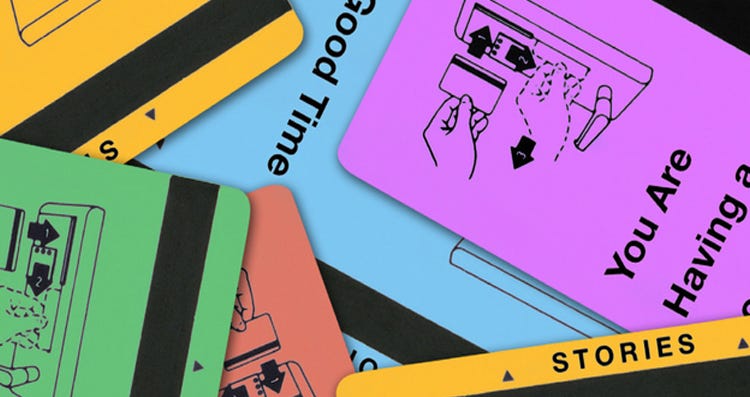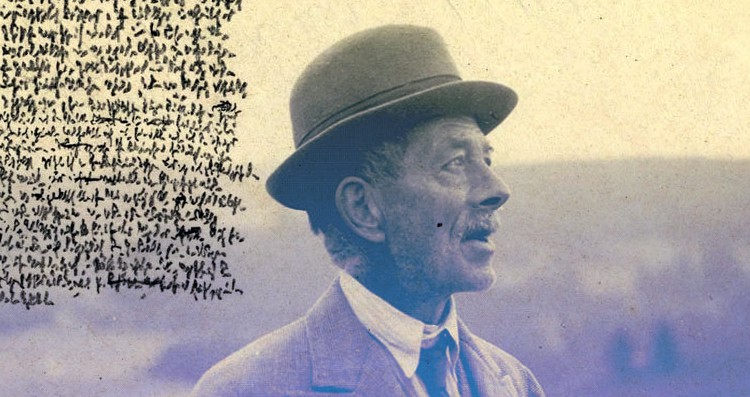Books & Culture
Are You Having a Good Time?
In Amie Barrodale’s stark collection, characters demonstrate the distance between connection and miscommunciation

The epigraph to Amie Barrodale’s new collection, You Are Having a Good Time, reads, “There are only two things. There is a successful miscommunication, and an unsuccessful miscommunication.” Barrodale’s tales are witty, but they can also be lumbering. Her unusual characters are in odd stories that are sometimes difficult to connect with. Barrodale keeps the reader at a distance, and off-kilter. At times, this works as a way to give a quality of observation to her stories, as in the award-winning “William Wei,” where we see a man living in his apartment, repeating actions until a mysterious woman takes him away. But as You Are Having a Good Time unfolds, Barrodale’s opacity becomes harder to parse. Are we to sympathize with these characters? Hate them? Often, observation becomes the only thing: They are fish in the tank and we are the ones watching from outside the glass.
The many strengths of Barrodale’s work include the way she artfully engages characters in miscommunicative dialogue. This is done brilliantly, particularly in light of the opening quote. Characters don’t listen to each other, and what they say out of distraction reveals a lot. In “William Wei,” the woman “often induced men to love her and then abandoned them. She said [to William], ‘Didn’t you notice how I forced this on you?’ [William] said ‘I don’t know what you mean,’ and she said ‘Yeah, that’s what I’m telling you.’” In addition to the creation of these beautiful missed opportunities, Barrodale’s reality is one where characters often realize the truth of a situation after they’ve walked away. Whether they’re understanding someone’s true intention, or what they missed, or when a relationship truly ends, Barrodale uses the pacing of her scenes to create tension, and then release it in unusual, provocative ways. Often, the way Barrodale ends a story is as original and fresh as her characterization of these hyper-focused characters.
Barrodale uses the pacing of her scenes to create tension, and then release it in unusual, provocative ways.
Characters in Barrodale’s stories are profoundly affected by addiction — to substances and strange behaviors. Jealousy, obsession, and even meditation are so acutely drawn that they haunt characters like ghosts. In “The Imp,” a story about a man who suspects his wife of having an affair, the man says, “By this time, I had hope. Maybe, I thought, maybe it will all work out. Maybe it’s true what she says — hadn’t I been acting strangely? Wasn’t jealousy another word for possession?” Barrodale understands how someone can be haunted by the spirit of obsession as much as a spectre. Superficiality reigns. In “Animals,” an actress is praised for being an ingénue, and then dumped as easily as she’s taken up. “Frank Advice for Fat Women” details a therapist’s obsession with both a young client and her mother. In each case, Barrodale shows us how obsessions hide dark, shameful traits, and how most people find it difficult to really look in the mirror.
You Are Having a Good Time examines the idea of art and creation in two of its latter stories, “The Commission” and “Mynahs.” In both, Barrodale seems to be saying that there’s an obsessive nature to what we create, as well, and a desire to try to control it after it goes out into the world. Mr. Tatsusuke, the creator of delicate pieces sold by a character in “The Commission,” wants his art to be in many hands.
He spent a lot of time with me personally, talking about the importance of touch. He said that a piece is beautified by being handled by all different sorts of hands, and he asked that I please place his work out, so people could touch it.
It’s easy to read Mr. Tatsuke’s theories as Barrodale’s own, and the jewelry he creates as an analogue to her stories. This is a beautiful idea, when we consider the story. As E.L. Doctorow theorized, the reader animates the text with his or her own experiences. Barrodale’s story recalls that idea. In “Mynahs,” Barrodale examines how plagiarism in the writing community can hurt the originator of an idea, but is often accomplished with little consequence. Though writing about writing (and workshops) can be difficult to sustain, Barrodale writes frustration well. If there is an element that unifies her characters, it is the impotent frustration they feel for trying to make others see what they want. Though she sometimes fails to make her characters elicit deep emotion, they are written in such a way that they present these frustrations as simple fact.

Barrodale’s style in the stories of You Are Having a Good Time is sparse. Sparse can work, but every once in a while her characters’ actions seem empty or methodical, devoid of purpose. The subtext is either missing or too difficult to discern through the staccato of her syntax. This is not an even collection, and as it progresses, it becomes more distant and difficult. Yet is that the way with most people? Perhaps Barrodale would have us believe it were so.









